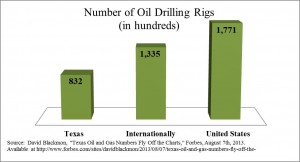If you will indulge me, I feel like waxing philosophic about the impact that the many redistributive economic policies being promoted by the Obama Administration will likely have on our nation’s environment and natural resource management. Consider the many ways our federal government is redistributing incomes to help the “poor” in American society:
The list goes on, but I won’t test your patience here. The bottom line is that the federal government is trying its very best to increase the cost of hiring unskilled labor while making the returns to becoming a skilled laborer much slimmer.
Further, the Fed has undertaken the largest Open Market Operations program in history, just to keep market interest rates at abnormally low levels. This action boosts business investment in physical capital, which is often justified as an attempt to increase GDP and employment (in the short run at least). However, this action also makes buying physical capital cheaper while unskilled labor is becoming ever more expensive to hire.
Even Bill Gates can do the economic math. Businesses will use more capital and hire less labor to produce our nation’s goods and services. They will invest more on technological innovation and less on developing industry-specific human capital. Nobel Laureate Gary Becker (who, sadly, passed away just recently) recognized that about 80% of the income differentials observed between skilled and unskilled labor in our economy are related to the economic returns to technological innovations. In other words, investing in capital and technology favors the skilled worker, not the unskilled worker.
In the past, middle class workers largely rose from the ranks of low-paying but skills-enhancing starter jobs to acquire the meaningful, industry-specific skills and valuable work experience that landed them their current, middle-income job. As these starter jobs disappear and the middle class slowly dwindles in number over time, there will be increasing calls for ever more income redistribution to rectify the gap between rich and poor — all in the name promoting equity.
Which brings us back to the quality of our environment and managing our nation’s natural resources. How will Congress respond to calls for redirecting funding to preserve our national parks and forests when entitlement programs for the growing ranks of low-income people are competing for the same federal dollars? How will scientific and economic criticism of federal lands use policy compete for scarce media time when ever more Congressional hearings will be held to consider ways to help the plight of America’s disappearing middle class? How will stories of federal bureaucratic bungling of natural resource management, or stories about innovative, market-based proposals for efficient and equitable natural resource uses, be able to compete for media attention that is stretched thin with stories of capitalism’s “failure” to maintain the middle class?
It seems clear to me that we are mindlessly following the voice of the “wizard” who can be seen busily pulling all the bureaucratic strings and pushing all the media buttons behind the grand curtain of government. Do we not see that he is feverishly trying to fix problems that he does not even realize are the result of his very own machinations?
Sigh… Excuse me, but I think I need an adult beverage…
